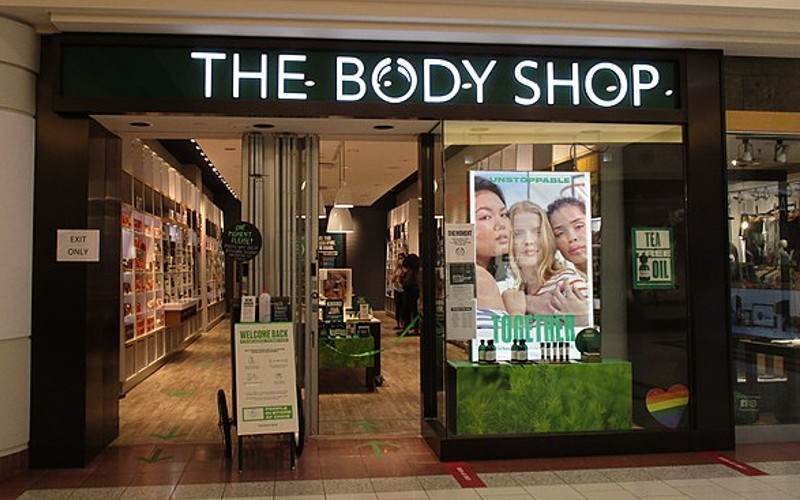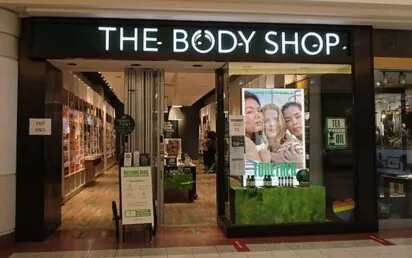Welcome to our RetailTech Insights report for 2024.
Published alongside our annual RetailTech 50 ranking, the report quantifies and reflects technology trends in eCommerce and retail.
After our readers and an expert judging panel together decided the UK’s most innovative startups, scaleups and established technology firms serving the sector, we polled the companies.
Thirty-one of the 50 companies are based in London, followed by a combined four in Manchester, Salford and Stockport. Bristol hosts two, with a further 13 towns and cities represented.
The stats
Are traditional bricks-and-mortar retail brands embracing tech effectively?
YES – 53%
NO – 47%
Does more need to be done to improve accessibility in online retail?
YES – 91%
NO – 9%
Have you raised investment in the last 12 months?
YES – 47%
NO – 53%
Do you intend to raise investment in the coming 12 months?
YES – 57%
NO – 43%
Do you plan to expand your workforce in the coming 12 months?
YES – 100%
NO – 0%
Are you operational in overseas markets?
YES – 76%
NO – 24%
Do you expect to be operational in overseas markets in 12 months’ time?
YES – 88%
NO – 12%
The views
Weeks after high street retailer The Body Shop entered administration in the UK, asked the RetailTech 50 and judging panel to describe a particular trend they have noticed in RetailTech in the last year.
“It would have to be AI,” says Scott Thompson, founder of Retail Technology Innovation Hub. “We’ve seen lots of examples of AI creating value and efficiency for retailers, but also many projects going nowhere as companies jump on the latest bandwagon.”
Fellow judge Lisa Byfield-Green, research director at Retail Week, cites the fact that AI was the Collins Dictionary word of the year in 2023.
“We have seen some innovative GenAI solutions being implemented by retailers to improve customer experience,” she adds. “These are largely confined to relatively small-scale projects for now, such as natural language interfaces for discovery, search and customer service and avatars to help customers pick the right sizes and visualise how a garment will look prior to purchase.
“We are in the early stages right now of experimenting with this technology, but it has great potential for personalisation, curation, supply chain optimisation and to minimise problems such as the high rate of returns in fashion.”
RetailTech 50 – UK’s most innovative retail technology creators for 2024
Sri Sharma, CEO & co-founder of Increasingly – which placed 10th on this year’s ranking – agrees that generative artificial intelligence tools such as ChatGPT are being used with greater frequency to assist with tasks including “email copy, eCommerce product descriptions and customer on-site chat”.
Judge Lucy Moore, associate director at Refresh, highlights improvements in affiliate technology that supports purchases made via influencer pages on social media platforms such as Instagram.
“These programmes reward influencers with a cut of the sale if something they recommend on social media is bought by a customer via their affiliate link,” she explains. “Not a bad money earner when you consider that 44% of people use Instagram to shop weekly.”
Jim Herbert, CEO of Patchworks, says the days when Google was the eCommerce high street are over.
Patchworks is an integration platform for B2C and B2B eCommerce businesses with hundreds of global brands and retailers under its belt. The platform provides a powerful no code/low code interface to connect systems through a combination of pre-built connectors and process flows.
“SEO was hyper important to attract people to your store, paid ads drove traffic, and the homepage conversion rate and site search conversion directly impacted orders,” Herbert expands. “These are all still hyper important, but there is now an entire eCommerce globe to stand out in: search engines (which reports are saying Gen Z are moving away from), other marketplaces (SHEIN, Secret Sales, Amazon) and of course social selling on TikTok, Instagram, Facebook etc.
“A trend therefore has been the adoption of marketplace software like Mirakl, Marketplacer or Izburg, bringing in new audiences. This adoption of marketplace tech, and feed management tech like Channel Engine, has also made it imperative for retailers to have automated integrations.”
Rachel Jones, founder of SnapDragon Monitoring – 12th on the ranking – points to a “huge increase in fake websites, the impersonation of brands and businesses online, and individuals on social media”.
Edinburgh-based Snapdragon has developed intelligent software to protect brands from such scams. “It’s really important that brands monitor domains and remove them quickly to avoid customers being duped, having their financial details stolen and – in the worst cases – experiencing phishing and cyber attacks,” she says.
“The look and feel of the fake website is exactly as the original so the differences can be difficult to spot – the only giveaway being the URL itself. It does not just affect large retailers and brands: even SMEs are now being affected.”
Coming trends
In the next 12 months, Neighbourly CEO Steve Butterworth expects to see increased integration of technologies such as AI to optimise product refurbishment, re-manufacturing and the extension of product lifecycles.
“This trend aligns with the growing emphasis on sustainability and reducing the environmental impact of consumer goods,” he explains. “This is likely to involve the implementation of advanced tracking and traceability technologies as well as platforms and applications to facilitate the return, repair and resale of products.
“A significant focus on leveraging technology to create more sustainable and circular practices within the retail industry will be essential.”
Bristol-based Neighbourly, which placed 35th on the ranking, is a community engagement platform linking retailers to food banks and charities.
Moore agrees that the focus will increase on sustainability-led tech. “Hopefully, we’ll see retailers leveraging technology to optimise energy consumption, reduce waste and implement circular economy initiatives,” is her view.
Byfield-Green anticipates a move among retail firms to identify AI partners as well as a growing focus on ethical AI, citing US giant Walmart’s Responsible AI Pledge.
Thompson expects the retail media space to “boom” as retailers take advantage of the fact that they are among the largest media owners around thanks to their store networks and digital assets.
“If executed successfully, it’s a win for retailers, brands and shoppers, but more needs to be done regarding measurement and standardisation so that it doesn’t just become another tax on suppliers,” he qualifies.

Jim Herbert
Herbert (above), a former European leader at BigCommerce who joined Patchworks in 2022, says ‘whole sales’ data is going to become a hot topic for retailers of all sizes.
“Large retailers will need to understand which products, channels and customers perform best in what conditions, and use this data to make informed decisions on what to stock and sell where,” he explains.
“In addition, the rise of customer data profiling will continue and highly personalised offers are a possibility, if the data architecture is optimised, driving sales and more importantly profit.”
Traditional retailers
Are traditional bricks-and-mortar retail brands embracing tech effectively, according to the judges?
“Yes, without a doubt,” says Thompson. “There has been a lot of interesting tech innovation in the physical retail space over the past 12 months: for instance, AI- and computer vision-powered self-checkout stores, automated ordering technology and personalised, immersive customer experiences such as EE’s new Experience stores.”
Moore cites the example of Uniqlo’s self-checkouts, which are powered by relatively basic radio frequency ID chip technology.
“Throw multiple items into the basket and they immediately appear on the self-checkout screen with no need for sorting: magic!” she says. “They’re so easy to use and require pretty much zero input from the user, reducing waiting times for customers significantly.
“This just goes to show that technology doesn’t need to be complicated to make a real impact.”

Byfield-Green (above) says technology is proving a differentiator for successful retail brands as a way to drive efficiency and growth. “We have seen some of the biggest UK brands including Frasers Group, Kingfisher, Marks & Spencer, John Lewis and Sainsbury’s leveraging technology in various ways this year for growth,” she says.
“For some this means investment in replatforming and ecosystem development; for others the focus is on leveraging insights and opportunities from first-party data to get closer to customers and explore new opportunities; and for others investment is focused on smart supply chains or the opportunities unlocked by new technology such as GenAI.”
Challenges
On the challenges that traditional retailers face in integrating technology, Sharma responds: “A lack of tech resource bandwidth because they are always busy on projects. Lack of budget to pay for tech resources.”
He says they built London firm Increasingly – an automated product bundling and cross-selling platform acquired by US firm Searchspring last year – with this in mind “to give the option to not need any tech resource or spend”.
Fellow London firm Parcelly, which offers parcel delivery to locations such as convenience stores, bars and gyms, cites legacy platforms “that are not readily adaptable to the integration of new technology”.
Herbert explains how larger enterprises can ensure current tech keeps trading while new tech is introduced and data is migrated: “There is an IT strategy called the ‘stranger fig’ which is named after a plant that grows alongside the host plant and slowly takes over the water supply & nutrients until it replaces it. This is possible in integrating new technology using an integration platform as a service (iPaaS), a platform that allows the IT team to quickly create integrations between legacy tech and new tech, and then swap out the legacy tech bit by bit until a modern, robust, scalable and secure architecture is in place.
“The benefit of an iPaaS is this best-of-breed architecture can then evolve more easily as new tech is purchased or old tech retired.”
Byfield-Green of Retail Week adds: “Retailers must decide whether to design and implement new technology in-house or to partner with trusted vendors.The trend is moving towards more partnerships right now, helping small- and medium-sized businesses gain valuable external expertise and assisting large retailers to become more agile and implement change faster.”
Accessibility
Moore of Refresh (below) says accessibility in online retail can be improved by considering it from the start of the process “rather than as an afterthought”.

“There are over two million people in the UK living with sight loss and many digital products and services still aren’t accessible to these people,” she says. “Simple things like adding alt text to images so that people using assistance technologies know what the image is of, adding audio or video options, and prioritising effective colour combinations can go a long way.
“For those needing to improve the accessibility of their eCommerce site, there’s a great ‘starter for 10’ on eCommerce accessibility from Shopify here.”
Parcelly says “utilisation of platforms, API development and A/B testing” can help
Herbert adds: “On the eCommerce side, it’s important to use scoring like Google Lighthouse to ensure your site is accessible by all, or to employ a digital agency to ensure that your store theme works for everybody.
“In store, an accessible store is key with aspects like wide aisles and trained staff to help every person that comes through the door.”
Funding landscape
Neighbourly’s Butterworth has raised funds through angel investors and institutional investors in the last decade with its last raise in early 2022: “The economic landscape has changed significantly over the last couple of years and raising investment has become more challenging: valuation multiples are down and terms are more aggressive.
“For investors, there has been a marked shift away from the ‘growth at all cost’ mindset to wanting to see a clear path to profitability and being cash-generative. It is not surprising to hear that 2023 saw the highest number of SMEs closed down in over 30 years.”
Herbert’s view: “2024 is more interesting: the lack of deployed capital in 2023 is impacting investor returns as PE and VC take their management charges, and therefore there has been a ‘loosening of the belt’ – but still company quality and believable demonstrable results are key.”
Parcelly says the fundraising landscape is “still challenging, yet slightly improved from 2022” while Sharma – who has now sold and exited three companies – has experience of raising a seed round and debt as an alternative.
Recruitment & retention
Asked about challenges in recruitment and retention – and how he overcomes these – Sharma says “it is always hard to hire great people”.
“We have an effective and efficient recruitment process clearly explaining what we offer and what we are looking for,” he continues. “On retention, we have offered great responsibility; managing by outcomes; flexibility; and share options for key contributors.”
Herbert says in eCommerce tech, the biggest challenge in recruitment has been the sheer number of candidates for a role – many of very high quality.
“Shortlisting and interviewing at volume is difficult so it’s been important to have a top line talent team internally to help find the right candidates,” he says.
“[On retention] it’s been effective to ensure that the team understands the company objectives, what we do and don’t do, and each team member’s part in that journey.”
Global growth
Following its US takeover and given its heavy presence in North America, Increasingly’s Sharma is ideally placed to explain how to approach growing in overseas markets.
“The challenge is to be a credible provider in a market where you aren’t known. We solved this through partnering in the US,” he says simply.
Herbert says timezone and culture are the two biggest issues for selling overseas from the UK.
On culture, he says: “What is ‘awesome’ to somebody in the USA – West Coast at least – might only be ‘OK’ to somebody from the UK. With clients all over the world, we are tackling this challenge through our partner-led strategy.
“The local agency can do most of our selling in timezone and in culture with us providing demo and pricing, and 24/7 global support through our Philippines and UK bases, but there will be local recruitment in the immediate future in the USA and ANZ to ensure our partners and prospects get what they need.”
Any other business?
We then gave the judges the opportunity to raise any other points – positive or negative – around the industry or ecosystem of wider business support.
“The tech industry is being highly democratised by the advent of no code/low code technologies. New retailers can create a web store in hours that looks 80% as good as something that would have been a 6-36 month project in 2012, then add in a point-of-sale terminal, list the products on Amazon and start selling on TikTok,” says Herbert.
“This is highly disruptive to older and larger businesses that still have older legacy tech holding them back, and we’ve seen a couple of giants go under here in the UK that in part was down to the technology not being fit for purpose. Enterprises need to embrace SaaS technology and innovate or die.”
Thompson says: “After being all the rage in 2023, the metaverse hasn’t yet lived up to the hype. But we should remember that groundbreaking technologies often take time to break through to the mainstream, with several bumps along the way.
“In my humble opinion, the metaverse still has the potential to revolutionise the consumer experience, creating a VR internet that allows people to (digitally) go where they want, do what they want, be who they want. And, of course, interact with brands and retailers and buy stuff from them.”
Moore has the final word: “With so much competition in the RetailTech sector, providers need to work hard to shape their unique value proposition. And with more retail competition than ever – compounded by the ease and prominence of selling via social media channels – to stand out retailers need to carve out a strong brand voice and ensure that is present across the omnichannel experience.
“This is not an easy feat when you consider how many channels retailers are now communicating with customers through.”

